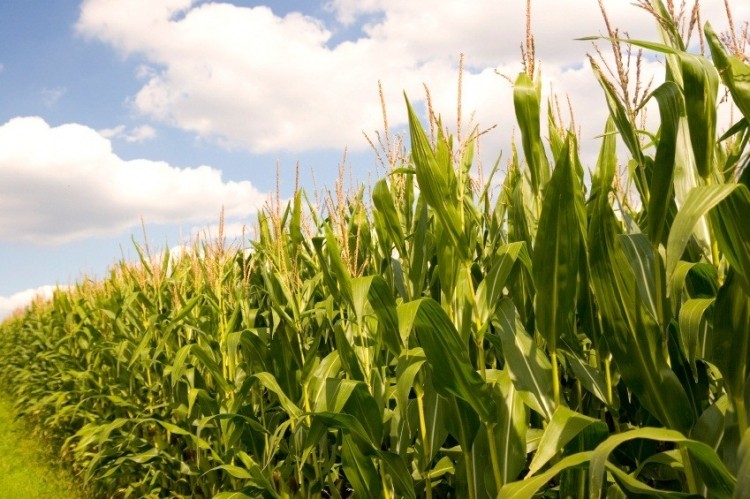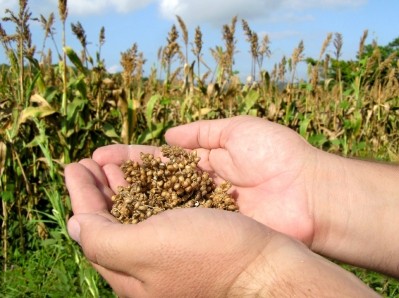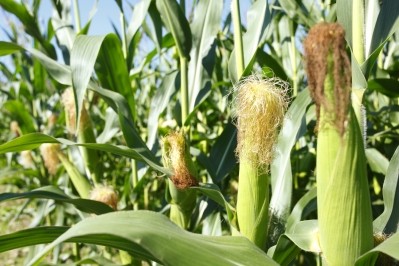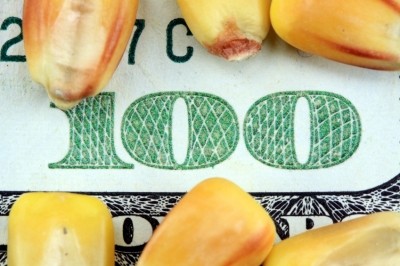Increased yields predict price drops for US corn, soy

Season average corn prices are expected to lower about 10 cents on both ends of the per bushel cost range, bringing it to $3.35-$3.95, said USDA officials in August’s World Agricultural Supply and Demand Estimates (WASDE) report. The mid-point of the price range is 5 cents lower than prices per bushel expected in 2014-15.
Similarly, the average price for soybeans for 2015-16 is predicted to drop by about $.10 at the midpoint from last month’s prices to a range of $8.40-$9.90 per bushel, while soybean meal is predicted to lose $5 at the midpoint, dropping prices to $310-$350, said the report.
“It’s clearly a buyers’ market in terms of where the prices will go,” said Dan O’Brien, extension agricultural economist at Kansas State University. “We’ll be looking at how they’ll stack up as we continue to see crop development and move closer to harvest. This has put the bar at the place of saying the moisture we received really isn’t going to have the negative impact on supplies, at least not that much (of one).”
Closer look at corn
“This time the items of interest were corn and soybean, the yields were higher than what many people expected,” Gary Schnitkey, a professor of agricultural and consumer economics at the University of Illinois and extension specialist told FeedNavigator.
Corn is expected to see an increase in production to about 13.7bn bushels, a boost of 156m bushels from July, said USDA officials in the report. The first survey-based corn yield forecast has improved by about two bushels per acre and the crop is on track to produce a record 15.5bn bushel supply for 2015-16. It is an increase of about 154m bushels from last month’s projection.
The increased yield is going to boost supply and will apply a downward pressure on prices, said Schnitkey. There also could be larger amounts carried over at the end of 2015-16.
With the anticipated drop in costs, feed usage is expected to grow and account, along with elevated residual use, for an additional 25m bushels, according to the report. Ending stocks for 2015-16 are predicted increase about 114m bushels.
“There were a couple of other adjustments to use, but overall the item that was the big one was increase in yield per harvested acre,” he said. “Estimates of that by private companies were all over the board, so this one put some downward pressure on the market.”
Though domestic use is expected to grow, the export market for US corn is thought to be about 25m bushels lower after facing competition from crops in Brazil and Argentina, said the report.
Details on soybeans
The picture appears similar for soy production, as an increased crop is anticipated, said Schnitkey.
Soybean production is anticipated to increase to about 3.9bn bushels for 2015-16, stated the report. Although the overall area of harvest is down from the estimates put forward in July, the first survey-based yield predictions show an addition of about 0.9 bushels per acre from the previous report, though remaining below last year’s record levels. The boosted production is expected to add an additional 16m bushels from what was previously anticipated, said the report.
Domestic soybean crush is expected to increase by about 15m bushels stemming from an elevated domestic use and exports of soybean meal, said USDA officials in the report.
The changes between the July and August reports can be expected, especially in years with unusual growing conditions, O’Brien said. With the levels of moisture some parts of the country have seen, this is likely to remain a crop where information from the field is premium.
Global perspective
On a global level, corn use in feed has dropped in the EU, China and the Ukraine, stated USDA officials. However, both the EU and Ukraine are expected to see larger amounts of wheat used in feed, while China is predicted to have higher usage of sorghum.
“They’re projected to have a good yielding year (for sorghum),” said Schnitkey. “The yield increased from 65m bushels to 74.6m bushels and the increase in acres was likely driven by strong sorghum prices.”
There is not expected to be any slowdown in the export market for grain sorghum at this point, added O’Brien.















